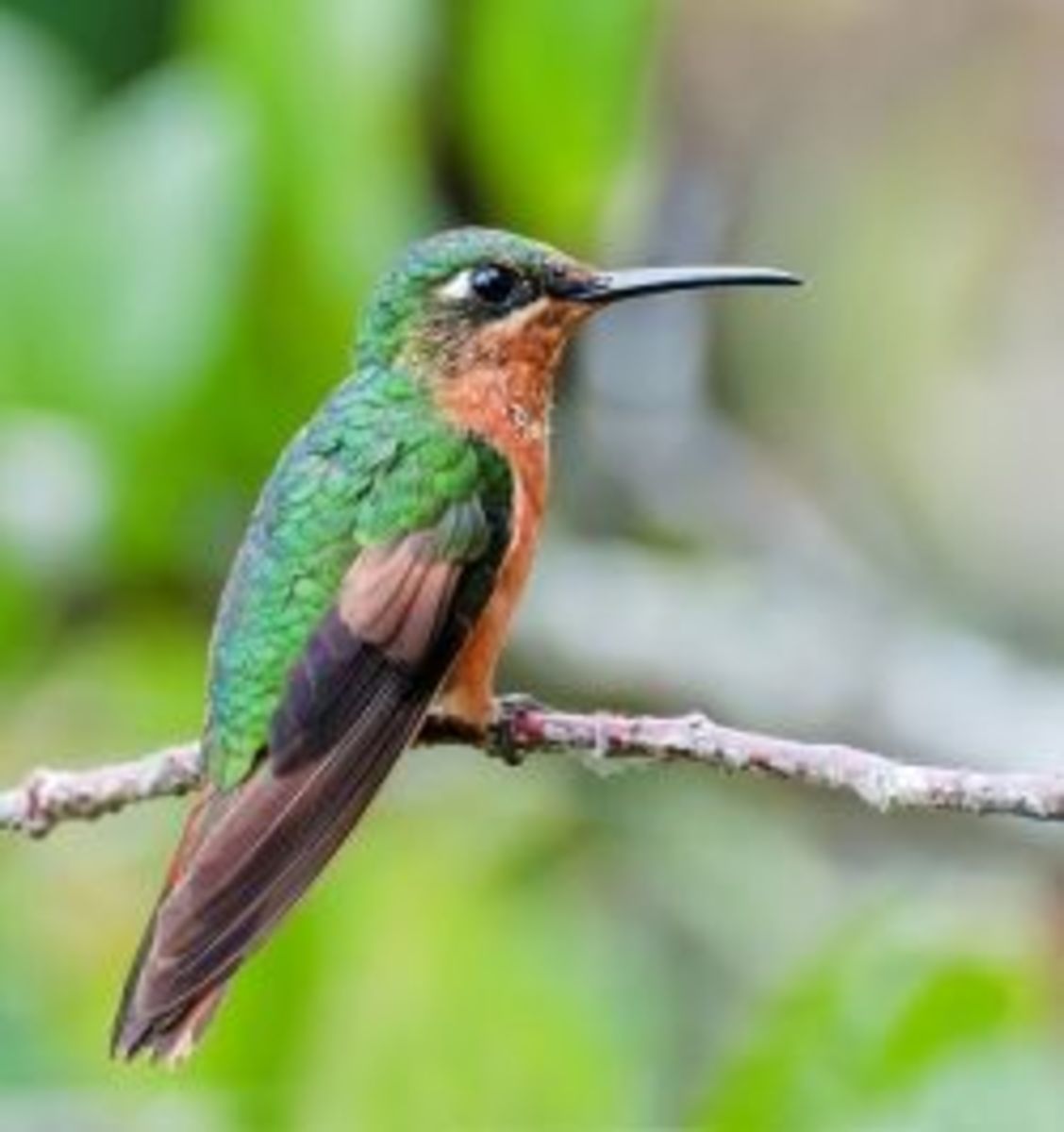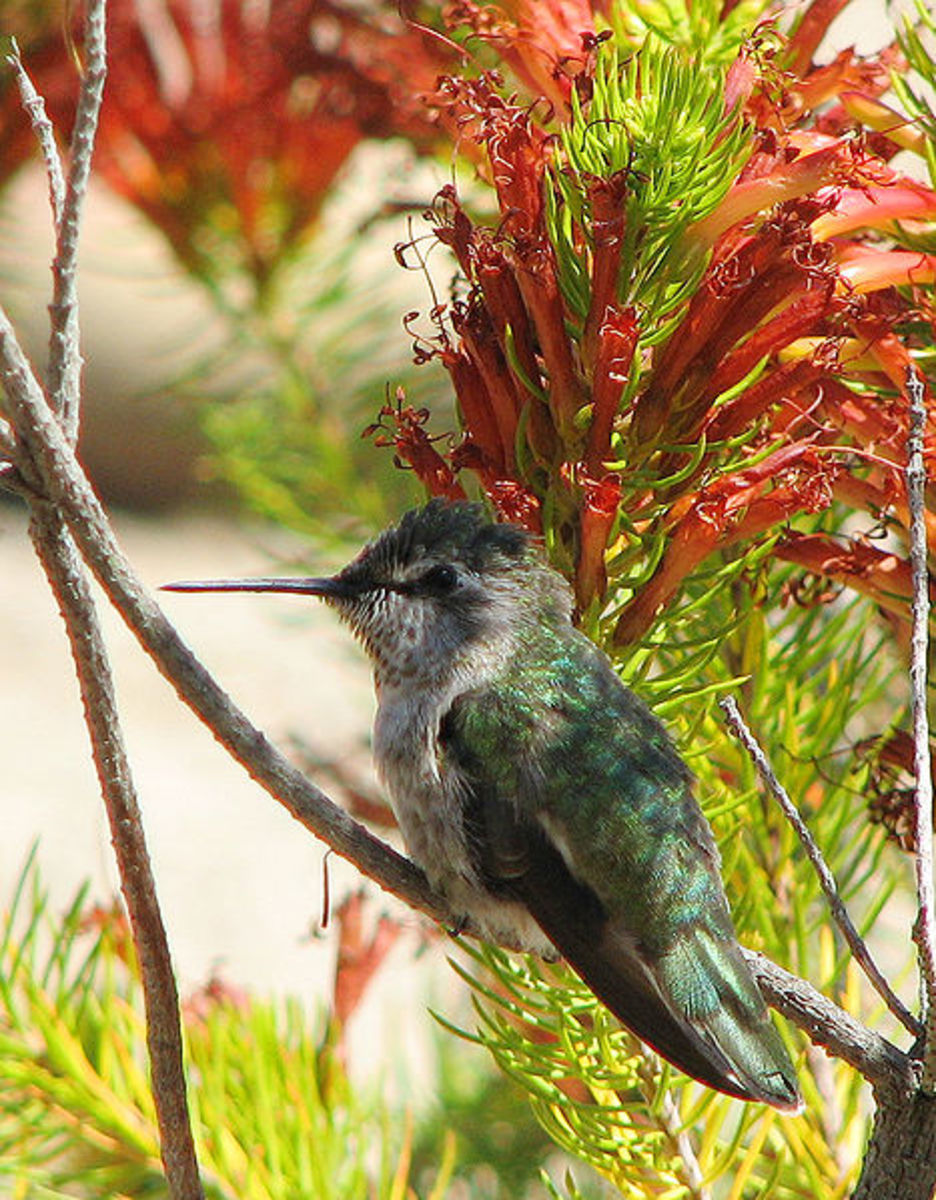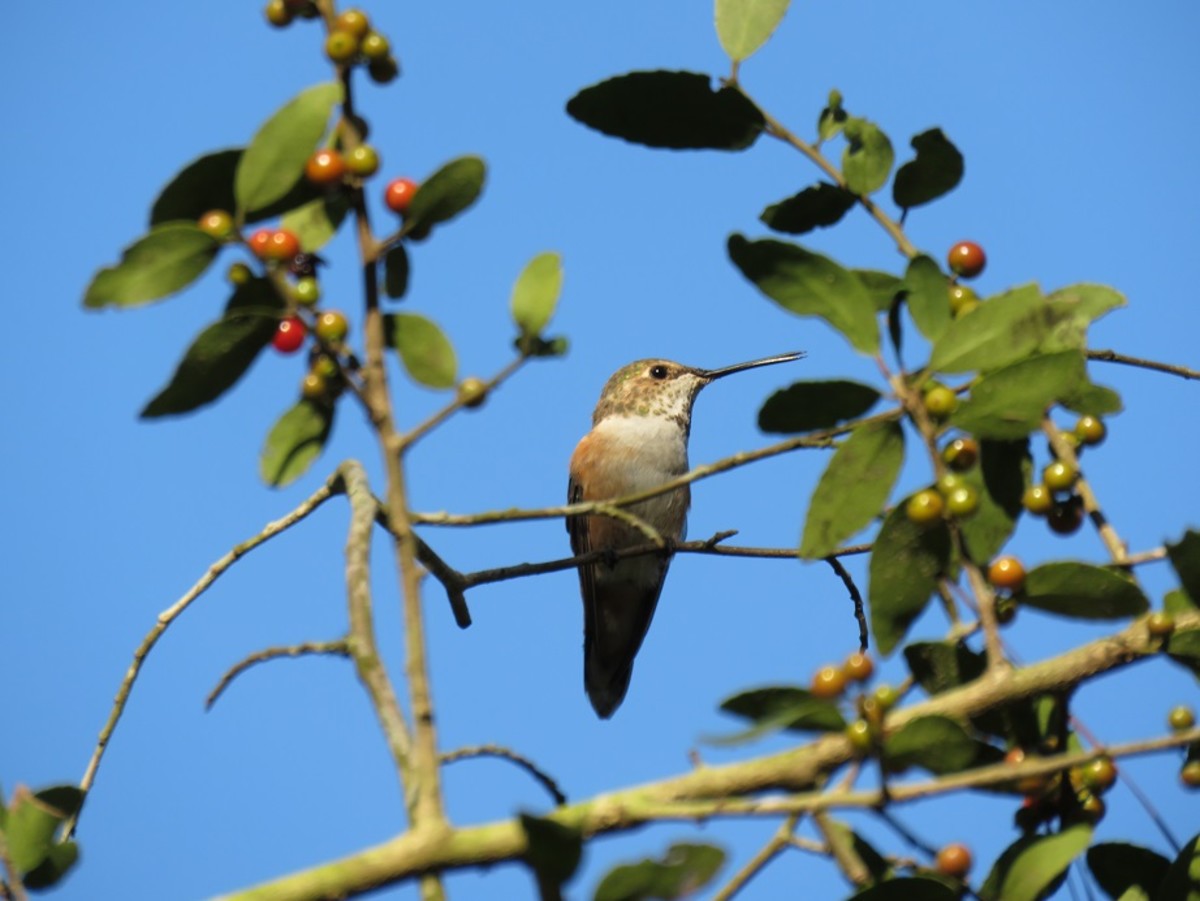Black-tailed Trainbearer - Hummingbird with an Impressive Following
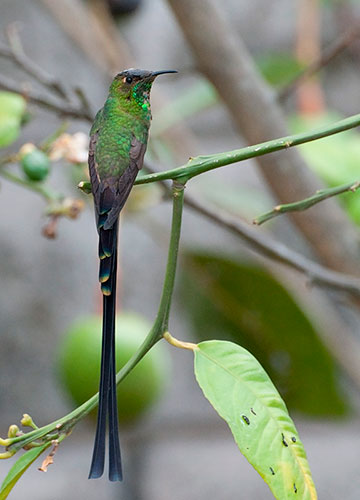
There is so much to see and do in Quito Ecuador because of its World Cultural Heritage Site status. However, there are other encounters while walking the streets of this historical city that impress an unforgettable image upon the memories of the unprepared wanderer. Imagine standing in the bustling Grand Plaza admiring the floral beauty and being confronted with an energetic hummingbird with a tail nearly three times the length of its body. Although startling to the novice traveler in this illustrious metropolis, it is a common occurrence and widely ignored by the unconcerned residents.
Range
The Black-tailed Trainbearer is a fairly common and extensive hummingbird ranging from the Andes of northeast Colombia and from extreme southern Colombia to southern Peru. It is a high altitude bird, predominantly observed between 2,500 and 3,800 m (8,000 and 12,500 ft). Unlike the Sylphs, a long-tailed cousin, the Trainbearers are not a forest dweller but favor the mountain scrub of open areas and are frequent garden visitors.
Within Ecuador this curious creature can be found from Carchi in the north to as far south as Loja. It is most numerous on the slopes of the central valley and less frequently encountered on the outer slopes of the east and west. The Black-tailed Trainbearer is a recurrent visitor to the gardens and parks around Quito and can be experienced on the hectic avenues of the city.
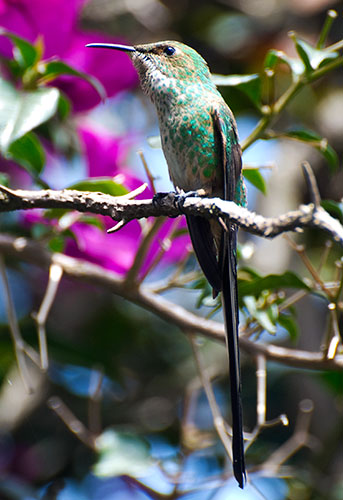
Appearance
With its impressive tail feathers, the male Black-tailed Trainbearer can measure up to 24 cm (9 ½ in) in length. The more diminutive female can be compared at 13.5 – 14.5 cm (5 ¼ to 5 ¾ in). Its bill is relatively short at 13 – 15 mm (0.5 – 0.6 in) and is slightly decurved. This hummingbird is predominantly shimmering green on the upper body and has a small white spot behind its eye. The throat and chest are glimmering golden green with the lower edge finishing in a point. The under side of the body is buff with an intensive green spotting. The tail is unmistakably long and deeply forked, black in overall appearance with green tips on all but the longest plumes.
The tail on the female of the species is not nearly as long but still quite impressive. The outer web of the outermost pair is whitish. The female is similar to the male in body coloring although it exhibits more white to buffy white on its lower portion with thick green spotting.
The only similar species within the range of the Black-tailed Trainbearer is the Green-tailed Trainbearer. These two hummingbirds can be difficult to identify without looking closely at the tail feathers and bill. The Green-tailed species has a straight bill as opposed to the former and is a much brighter green across the entire body. The tail does not exhibit much black. The Black-tailed Trainbearer is much larger (by about 7.5 cm or 3 in) which makes it much easier to identify.
Habits and Habitats
The Black-tailed Trainbearer is a numerous and quite familiar hummingbird of the Ecuadorian sierra. It can be constantly observed visiting the gardens of many towns and cities of the highlands, including the populous regions of Quito. It prefers more arid areas than its cousin the Green-tailed Trainbearer. In spite of its small size, it can be quite aggressive that feeds on a variety of flowers. The aerial displays of the male during courtship are quite impressive as they fly high into the air and then dive suddenly and rapidly towards earth producing a loud ripping sound as they descend.
This hummingbird species can be easily viewed anywhere within the central valley of the Ecuadorian Andes. City parks as well as protected reserves are home to this remarkable creature.
Summary
The Black-tailed Trainbearer is a magnificent hummingbird that is easily observed by everyone who visits the city of Quito and the surrounding area. Its splendid appearance and curious habits will delight the enthusiastic traveler and will provide unforgettable memories of their visit to this splendid country.
Other Articles by this Author
- Masked Flowerpiercer of the High Tropical Rainforest
Masked Flowerpiercer (Diglossopis cyanea) The Masked Flowerpiercer is a distinctive little bird in the Tanager family inhabiting the higher altitudes of the tropical rainforest. Ranging from the mountains of... - Club-winged Manakin - Tropical Rainforest Casanova
Club-winged Manakin (Machaeropterus deliciosus) The tropical rainforests of South America entice many naturalists to observe the abundant treasures that are hidden within its canopies. There is, however, one... - Sword-billed Hummingbird A Tropical Rainforest W...
Sword-billed Hummingbird (Ensifera ensifera) Thousands of people journey to Ecuador to marvel at the astonishing biodiversity of this tiny nation. With over 1,600 species of birds to observe, none fascinates...
Related Links
- Discovering the Birds of Ecuador
Articles on the different birding areas of Ecuador - The Birds of Ecuador
Photos and articles about the birds of Ecuador



